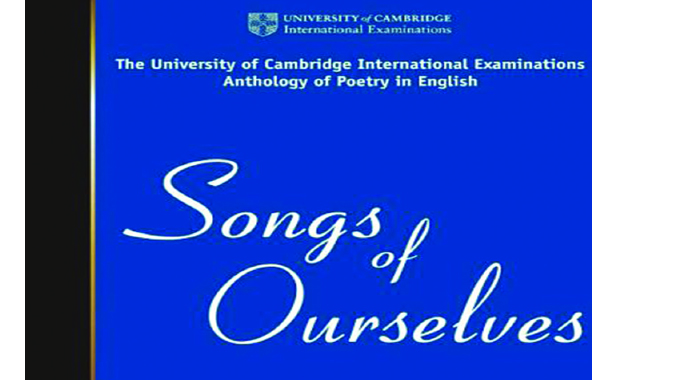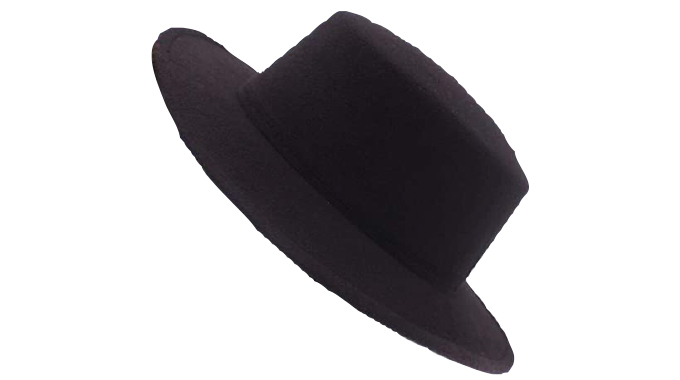Let’s keep dancing to ‘Songs of Ourselves’

Elliot Ziwira At the Bookstore
When the Muse inspires about 400 years of vision to more than a 100 poets from across the length and breadth of the English-speaking world to converge and tell the unequivocal story of toil, love, hurt, despair, war, frustration and death in different styles, but with one voice; then, humanity’s yearning voice is amplified.
It is this clarity in voice, through different tempos, which makes the issuing music to be both therapeutic and soothing.
The heart may be burdened, the spirit in tatters, the soul burdened, and the body exhausted, but with musical instruments in capable hands, hope is harnessed.
During such times everything feels lost upon the horizon; and like a mirage, music becomes a source of inspiration.
Music is one of nature’s finest gifts to man, which makes it possible for him to relate to his fellows and the environs around him.
It is a powerful tool in a miasmic world where everything seems to be in abeyance, and the mighty jolt the feeble from their dreams. Song is an elixir to those whose aspirations are trampled on; so soothing and ennobling.
But who then should be playing the music, and capture the songs that inspire us all as a global people?
“Songs of Ourselves”, a compilation of poems done by the University of Cambridge International Examinations, aptly responds to the question above, as it captures more than four centuries of poetic vision.
Though meant to stimulate mastery and critical reading, “Songs of Ourselves” goes beyond the rubble of academic discourse to consume the lay reader as well.
Sluicing through a multicultural landscape, the collection timelessly explores the nature of Man as he struggles against himself, his fellow men and his environment.
Divided into five parts drawn from the 16th to the 20th Centuries, the poetic voices used in the collection are unique in their absolution of creed, colour and time in evoking human feelings of gloom, glee and hope.
Indeed, there is a story for each one of us in our individual moulds, for the songs are a reflection of us all, regardless of age, station in life or affiliation. From Great Britain, America and India, through the Caribbean Islands, to South Africa and Zimbabwe, all are represented.
“Songs of Ourselves” explores commonplace, despicable and ghoulish experiences through the wailing tone in the daily songs of the common man, and juxtaposes it with the ennobling, opulent, and yet rueful repertoire of the powerful and affluent.
All these separate voices merge into one foreboding song of the futility of life.
The first part, covering the 16th and 17th centuries, has among others, poems by such luminaries like William Shakespeare, Lady Mary Worth, Sir Walter Raleigh and Queen Elizabeth 1.
The Queen has three poems in this collection covering human follies of conceit, suspicion and arrogance.
In the poem, “When I Was Fair and Young”, Queen Elizabeth 1 explores the vanity of outward appearances, illuminated through beauty and youth, as they lack permanency. Women lay in the shadow of beauty and youth in their dealings with men, making them conceited and predatory.
However, when the shadow fades, as it is wont to do, they are left clutching to mere egos.
This rationale is explored through the woman in “When I Was Fair and Young”, who in her youth could control men with her whimsical beauty and tell them: “Go, go, go, seek some otherwhere; importune me no more,” until her beauty, like fashion, fades out of season, much to her fear and lament.
Using traditional conventions of poetry, like end rhymes, and a subdued pace through the use of short sentences and punctuation marks, the Queen effectively exposes the folly of vanity.
In “No Crooked Leg, No Bleared Eye”, written in only one quatrain, she pokes at the bane of suspicion, as it surpasses any other form of disability.
The singing Queen also exposes the paradoxical nature of life and human nature in “I Grieve, and Dare Not Show My Discontent”.
William Shakespeare has six of his prominent 150 sonnets and poems in the anthology.
His poem, “Song: Sigh No More, Ladies”, examines the chauvinistic and deceptive nature of men, and implores women to be wary of such tendencies. Women should position themselves on a warpath and extol their lot, instead of perennially sulking.
Shakespeare sings:
Sigh no more, ladies, sigh no more
Men were deceivers ever;
One foot in sea, and one on shore,
To one thing constant never.
Then sigh not so,
But let them go.
In “Song: Fear No More The Heat O’Th’ Sun”, the poet questions the reason for woe and toil, tyranny and coercion when Man is only a passing shadow, since all must “come to dust.”
Death, though final and inevitable, is used as a form of escapism from oppression, although the oppressors themselves and their physicians will also not escape the Grim Reaper’s cold unfeeling scythe
In “Sonnet 18”, “Sonnet 73” and “Song: Blow, Blow, Thou Winter Wind”, Shakespeare explores the frailty of human life when pitted against the vagaries of nature.
His toils and aspirations are only futile, after all. This rationale is also obtained in Sir Walter Raleigh’s poem, “What is Our Life”.
The 17th and 18th Centuries are represented by poets like William Blake, Alexander Pope, Edward Ward and Thomas Gray.
In “The Fly”, William Blake questions, like Shakespeare, Sir Raleigh and James Shirley, the essence of human life if put against animal life.
Inasmuch as man is capable of ending or trivialising animal life, his mortality exposes him.
A supernatural hand thwarts his hopes in one shift swish just as he does to those below his station.
His life and that of a fly, which he insensitively brushes with the back of his hand, are the same; impermanent and futile.
James Shirley, also finds no solace in worldly glory and self-aggrandisement in the poem “Death the Leveller”.
All become futile in the telescopic eyes of death, the Justice of the Peace.
In one compelling 16-lined stanza of almost the same length, and punctuated at the end to subdue pace and sustain an overall tone of contempt, Katherine Philips debunks creation’s concept of matrimony as satiating and sacrosanct in “A Married State”.
Her opening lines are apt: “A married state affords but little ease:/The best of husbands are so hard to please.”
She advocates celibacy because it does not distract a woman from worshipping her maker. Virginity is a woman’s forte which she should guard jealously to alleviate any fears or pains associated with love, childbirth and motherhood; aspects which are claustrophobic and fatiguing.
To the poet, a married state is not worthwhile, for men’s egos are insatiable.
This, however, is rather as misogynistic as it is sacrilegious, because it demeans God’s idea of creation and regeneration, which somehow pits the artist as both feministic and chauvinistic, seeing that it takes two to tango.
Marriage is about giving, and not always receiving. Compromise is required as is encouraged by Dennis Scott in “Marry song” for the “geographical landscapes” of a woman’s mind are always in a state of flux, which makes it tasking for men, especially her husband to understand her.
The recurring themes of love in all its variations, death, deception and war are carried into the 19th and 20th Centuries, where they find home in the poetry of the nature poets, William Wordsworth, Boey Kim Cheng, Margaret Atwood, T.S. Eliot, Emily Dickinson, Oscar Wilde, Maya Angelou and the Zimbabwean master craftsman, Charles Mungoshi, among others.
In the poems “Attack” and “Reservist”, Siegfried Sassoon and Boey Kim Cheng, respectively decry the decimating nature of war as everyone is reduced to a victim in an attempt to pamper individual whims.
This is also true of the poem, “Cambodia”, by James Fenton.
Nature poets bemoan the excruciating pain unleashed by technology on the landscape, as city planners destroy nature’s armoury, and in its wake construct skyscrapers, which crouch menacingly on the horizon of hope.
The African song of displacement, toil and injustice is given a soothing tempo through Charles Mungoshi’s “Before the Sun” and Hilaire Belloc’s “The Justice of the Peace”.
Belloc challenges the erstwhile coloniser to consider the African’s predicament.
In the opening stanza, he quips:
Distinguish carefully between these two,
You have a shirt, a brimless hat, a shoe
And half a coat. I am the Lord benign
Of fifty hundred acres of fat land
To which I have a right. You understand. . .
I do not envy you your hat, your shoe
Why would you envy my small estate?
In the end the coloniser uses “economic force” to get that “small estate”.
As a master of understatement, Mungoshi uses a narrative technique that combines natural images with conventional extended metaphors of hope to capture both the denotative and connotative processes of toil and adolescence.
At the denotative level, he captures the story of a 14-year-old boy, who wakes up “before the sun”, chops firewood, and roasts himself two cobs of maize and readies himself against the rising golden ray from the east.
The boy’s travail, however, connotes the rebellious, ebullient and daredevil nature of youth, as the sun that he chides, is likened to “a grown-up” that is constantly checking on his progress in the same way that Man is monitored by fate.
Strength seems to be the boy’s forte against all adversity.
However, there seems to be no hope for him as in the end his cobs—his weaponry– remains “just two little skeletons in the sun”, which shines triumphantly over him.
“Songs of Ourselves” (2005) is, indeed, a must-read for all serious followers of poetry across the globe. It darns into place all of society’s scanty pieces of hewed existence to create a complete garment of patched hope.








Comments